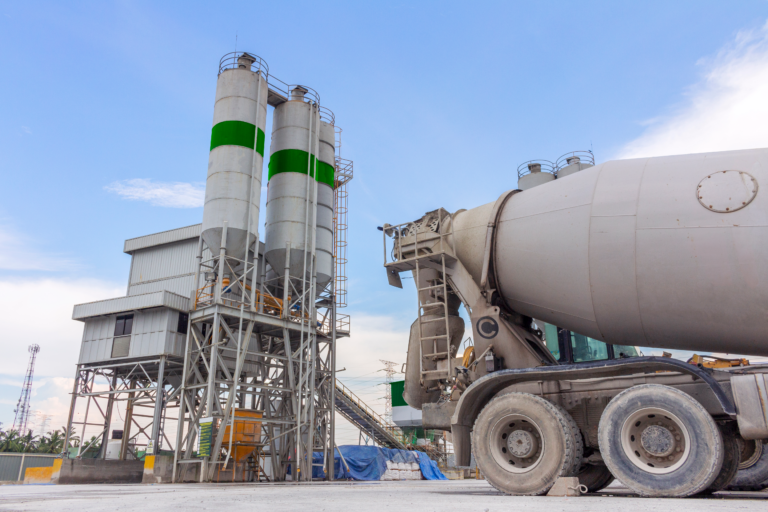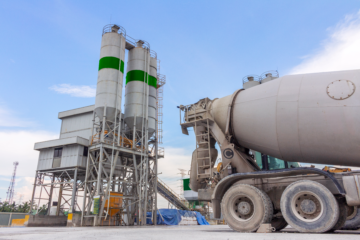Ready-mixed concrete producers often overdesign their mixtures above the required average strength to ensure field performance despite the variability of several factors that are outside of a producer’s control. Since failure to meet required strength can lead to structural problems, leaving a concrete producer potentially responsible, concrete producers often overdesign to self-protect against such liability. Several reasons can cause excessive overdesign including, but not limited to, compensating for improper field practices like excessive water addition or the need for early-age strength requirements; necessary to speed up construction processes such as formwork removal.
Explore 12 Futuristic Technology Trends Solving Concrete's Biggest Challenges.
Although overdesigned concrete mixtures ensure that the average strength is unlikely to fall below the specified strength, overdesigned concrete with high cementitious contents can lead to performance problems; such as cracking, higher in-place temperatures, excessive shrinkage and creep, and alkali-silica reactions in addition to a higher carbon footprint, as portland cement alone is responsible for the majority of concrete’s carbon emissions.
A Call for Sustainable Practices
A recent Giatec survey analyzing over 10,000 concrete mixtures revealed that 78% were overdesigned. This overdesign represents a missed opportunity for the concrete industry to reduce its embodied carbon footprint while maintaining performance standards. According to the National Ready Mixed Concrete Association (NRMCA), the estimated magnitude of overdesign involves an excess cementitious material use of approximately 77 lb/yd³, a slight improvement from the 80 lb/yd³ reported last year. While this reduction demonstrates progress, it underscores the significant potential for further optimization. This situation calls for innovative strategies to mitigate the environmental impact of concrete without compromising its performance.
Producers and industry leaders must answer critical questions to drive the industry toward sustainability:
1. How can concrete producers reduce the carbon footprint of their products today?
2. What strategies can achieve lower carbon footprints without compromising performance?
3. What innovative solutions are commercially available to support decarbonization?
Opportunities for Reducing Carbon Footprint in Cement and Concrete
1. Setting Clear Carbon Targets
Governments and industry organizations have recognized the urgent need to decarbonize the cement and concrete sectors. In Canada, the cement and concrete industry has committed to reducing over 15 megatonnes of greenhouse gases by 2030 and achieving net-zero emissions by 2050. This ambitious plan aligns with the government’s broader climate goals, which include reducing national emissions by 40% below 2005 levels by 2030.
The American Concrete Institute (ACI) is also addressing these challenges through initiatives like the ACI Code-323, which establishes benchmarks for low-carbon concrete. Additionally, the NRMCA’s cradle-to-gate Life Cycle Assessment provides measurable goals to reduce embodied carbon by up to 35%, offering producers specific targets for more sustainable practices.
Clear and measurable carbon targets are essential for aligning industry efforts, enabling stakeholders to track progress, and ensuring accountability.
2. Reducing CO2 in Cement Production
Cement production is a significant contributor to global CO2 emissions. Key strategies to lower these emissions include:
– Thermal and electrical efficiency: Upgrading cement production plants to reduce energy consumption.
– Alternative fuels: Replacing fossil fuels with biomass or waste-derived fuels.
– Supplementary cementitious materials (SCMs): Using materials like fly ash, slag, and silica fume to reduce the amount of clinker required.
– Carbon capture and storage (CCS): Capturing CO2 emissions during cement production and storing them securely.
3. Maximizing Supplementary Cementitious Materials (SCMs)
SCMs are a critical component of low-carbon concrete. Materials like fly ash, slag, and silica fume, which are typically industrial by-products of coal, steel, and silicon respectively, not only reduce carbon emissions but also enhance the durability and performance of concrete. SCMs can replace up to 70% of traditional Portland cement in some applications, significantly lowering the carbon footprint.
Incorporating SCMs requires precise quality control and monitoring to ensure consistent performance. Giatec’s SmartMix allows concrete producers to have unmatched visibility into the performance of every mix, along with insights into mixture optimizations.
Innovative Solutions for Low-Carbon Concrete
1. Carbon Sequestration and Storage
Concrete naturally absorbs CO₂ through carbonation, a slow process that can be accelerated using advanced techniques:
– Carbonation curing: Exposing early-age concrete (which is rich in calcium hydroxide) to concentrated CO₂ can form stable carbonates can significantly reduce carbon footprint. This has been utilized within the last decade by several technologies to reduce carbon footprint.
– Mineral carbonation: this fast-paced imitation of rock weathering occurs naturally at a geological timescale of millions of years. CO2 attacks alkaline materials during this process, producing stable inorganic carbonates. These carbonates can then be embedded into concrete and utilized as aggregates to reduce the overall material carbon footprint.
– Passive carbonation: As concrete’s interstitial pore solution is highly alkaline, it naturally absorbs carbon dioxide during long-term exposure, in a process termed carbonation. The binder composition plays a critical role in the carbon sequestration capacity of concrete mixtures, as the binder is the main provider of the reactive materials required for the carbonation curing process. Thus, different cement types have different carbon capture capacities, and inversely, pozzolanic mixtures reduce concrete’s ability to absorb carbon dioxide, although they improve its performance and durability.
2. Optimizing Mixture Design
Optimizing concrete mixtures reduces overdesign and minimizes cement content while maintaining required performance levels. Producers can utilize quality control data to periodically review mixture performance, detect overdesign and mixture optimization opportunities and adjust mixtures accordingly to reduce cement utilization and the magnitude of overdesign. Giatec’s SmartMix software leverages artificial intelligence to design mixtures that balance strength, durability, and environmental impact. By reducing reliance on trial-and-error methods, SmartMix accelerates the adoption of low-carbon technologies across the industry.

3. Advanced Admixtures
Admixtures improve the properties of concrete, reducing its environmental impact. Types of admixtures that can assist in reducing carbon footprint are:
- Water-reducing admixtures are able to reduce the mixing of water from concrete, which allows cement savings with an equivalent slump and strength, or strength increase while maintaining the same cement content and slump.
- Hydration control admixtures prevent the disposal of leftover concrete and wash water from ready-mixed concrete drums in the environment by stabilizing cement hydration during a desired timeframe.
- Crystalline admixtures densify the concrete microstructure and create a waterproofing barrier, extending the concrete’s lifespan by increasing its water and chemical penetration resistance.
4. Enhancing Quality Control
As performance variability reduces (coefficient of variation reduction), the required strength generally reduces for the same acceptable failure percentage. Therefore, theoretically, a more consistent performance can lead to an overdesign reduction. Reducing the coefficient of variation requires the following best practices:
- Improving Quality Control in Raw Materials: ensuring cementitious materials and aggregate quality, monitoring moisture content and material temperature, etc.
- Optimizing concrete mixtures for usage and standardizing proportions: using a well-tested and optimized mixture for a specific application and reducing the need for on-site adjustments
- Reducing batching variability and standardizing mixing processes
- Monitoring environmental factors: controlling material temperatures and curing practices
- Enhancing testing and quality assurance including regular sampling, consistent testing and equipment calibration
- Personnel training
- Plant and equipment maintenance
- Leveraging advanced technologies for concrete monitoring and performance evaluation
Conclusion
The concrete industry faces a dual challenge: meeting structural demands while reducing environmental impact. By addressing overdesign and embracing innovative solutions, the industry can lead the way toward a greener, more sustainable future. To continue learning, read our blog on the 7 Key Methods for Sustainable Construction Practices.








